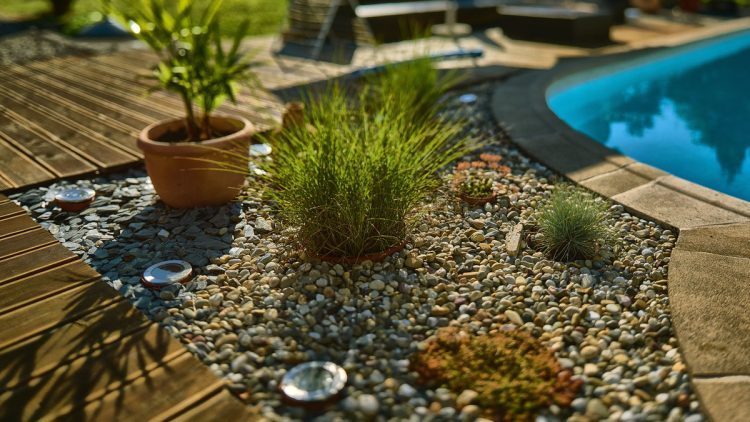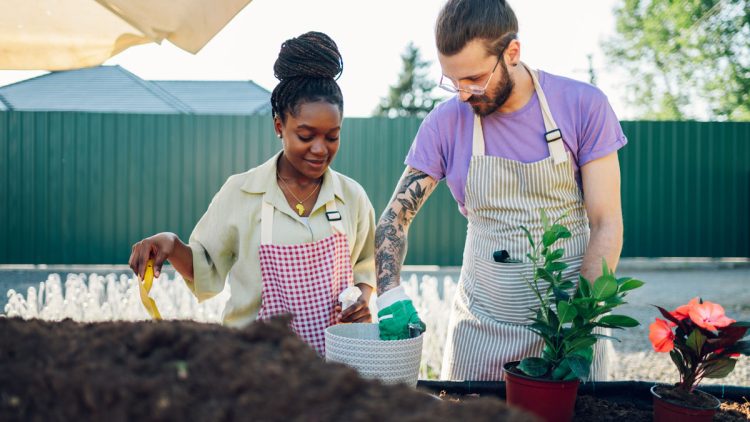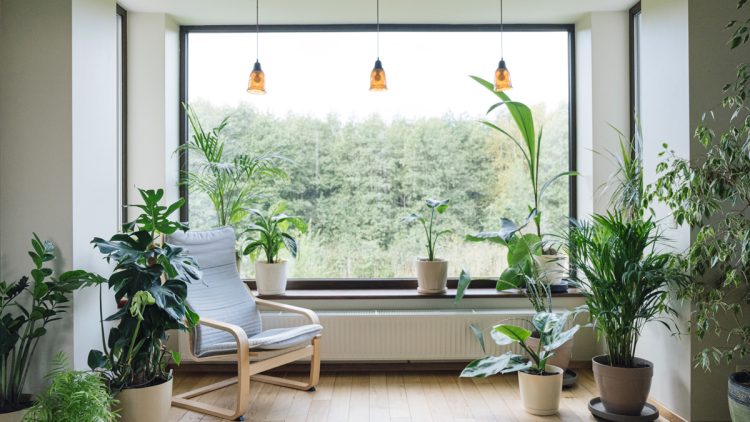These techniques and tools are utilized by professional landscapers to breeze through yard and garden duties. “Appropriate” their techniques and make more effectual use of your gardening time and more importantly, your money.
Purchase a Tarp
Utilize a tarp for moving lightweight hefty material such as leaves, weeds, and even some types of brush. Use it for retaining soil when digging holes, and for keeping your grass clean when doing so. You can cover plants in the back of your truck when coming back from the home improvement store or nursery.
Strategically Use Weed Fabrics
Landscape fabric is ideally useful under pebbles, gravel, or mulch pathways to keep the material from submerging into the soil. Disregard the fabrics in planted places. It only offers a brief sense of satisfaction until the weeds begin to grow in the mulch on the top of the fabric.
Use Starter Fertilizer
Apply starter fertilizer when planting anything. These fertilizers can provide a considerable increase to newer plantings. The best fertilizers are low in nitrogen, have a little more phosphorous, and above all, mycorrhizae-beneficial fungi that helps to greatly increase the soil area from which plant roots draw their minerals. An excellent starter fertilizer coupled with good planting methods is a wonderful safety net.
Choose Sensibly Between Bulk and Bagged
Choose sensibly between bulk and bagged soil, mulch, and stone. Purchase bulk materials when it can be dumped on the area where it is going to be spread. Purchase bagged material if it is required to be moved again following delivery. All of these tactics are going to save time, labor and money.
Garden Tools
Only purchase good quality garden tools. The best quality might be a little too expense, and a needless cost for weekend do it yourselfers. Low-cost tools can potentially break in the middle of the first job. Save money and time by purchasing good quality garden tools at affordable prices.
Integrate Annuals
Integrate your annuals in beds or pots at high-visibility areas in your landscaping for maximum effect. It would be very expensive for planting new annual colors during the entire landscape each season. Use these high-impact, long-bloomers in key areas such as your entryway, mailbox, and patio containers.
Make Mowing Fast and Easy
Group plants into islands and beds and mulch them properly to avoid mowing and trimming around each single plant.
Keep Your Leaves
Don’t send your leaves to the rubbish site. Mow small amounts into your lawn to provide a small dose of fertilizer for the grass and nourishment for earthworms. Utilize a leaf shredding blower/vac or bagging mower for grinding up fall leaves for use as mulch or add them to your compost pile. Cultivate them into your gardens prior to planting winter cover crops.
Recycle Your Grass Clippings
Use a mulching mower rather than bagging and dumping your grass clippings. This is going to cut fertilizer requirements by up to thirty percent.
Test Your Soil
Have your lawn and garden soils tested by your local Extension Service. Assuming your fertility requirements can lead to pricy mistakes. Soil test outcomes are going to show the current conditions and what needs to be applied for your sort of lawn, flower gardens, vegetable harvests, etc.
Work From a Plan
Create a blueprint for your landscape but work in steps. Keep your budget in check and get the maximum impact by concentrating on smaller projects that are part of the bigger picture. When one project is finished, go to the next.
Purchase Enough the First Time
To determine how much mulch or soil to purchase, you need to know how to calculate square footage of the area, and how to convert cubic feet of the material for coverage of an area at particular depth. Make less trips to the garden center by buying the correct amounts of mulch and soil initially.
Purchase Enough Plants
Don’t deplete your variety of choices. Purchase more flowers and plants than you think you will need… you can always return leftovers or find a place to use them. Should you run short and must go back to the nursery, your color(s) might be gone.
Landscaping Materials Scottsdale, Arizona
A & A Materials, Inc., located in Scottsdale, Arizona, offers, all purpose sand, aggregates, river rock, rip rap rock, mulch and wood chips for your landscaping or gardening needs. Contact us or call us at 480-990-0557 for more information.



